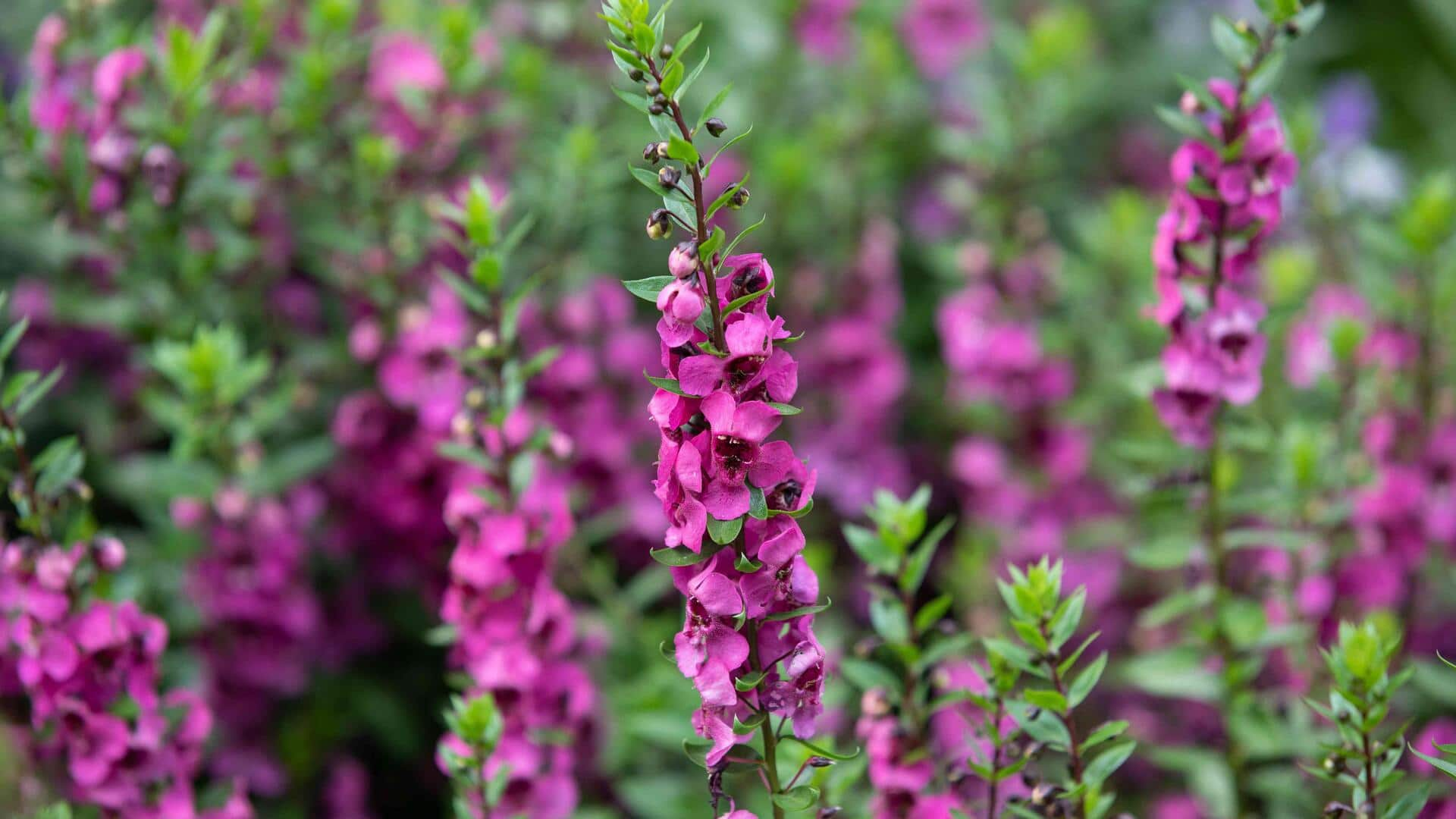
It's easy to grow angelonia at home—here's your guide
What's the story
Angelonia, also called summer snapdragon, is a colorful and hardy flowering plant that loves heat.
Ideal for sunny balconies, this plant provides a non-stop show of flowers all summer long.
This article gives you easy-to-follow tips on growing Angelonia at home. Get ready for a burst of color on your balcony!
Variety
Selecting the right variety
There are many different types of Angelonia, each with its own color and size.
Some of the most common ones are Angelonia angustifolia, which come in purple, pink, and white flowers.
When selecting a type for your balcony, think about how much space you have and what colors you like.
If you have a small space or want to grow them in pots, choose a compact type.
Soil prep
Preparing the soil
Angelonia prefers well-draining soil with a neutral to slightly acidic pH. A range of 5.5 to 6.5 is ideal.
Amend the soil with organic compost prior to planting to enrich it.
For containers, use a high-quality potting mix to guarantee good drainage and avoid waterlogging, crucial for the plant's health.
This groundwork ensures your Angelonia thrives, providing you with a stunning display of vibrant blooms all season long.
Sunlight
Ensuring adequate sunlight
To thrive and bloom profusely, Angelonia needs a minimum of six hours of direct sunlight every day.
Ensure to place your plants in a location on your balcony that gets plenty of sun all day.
In regions with very hot summers, offering some afternoon shade can prevent the plants from getting scorched.
Watering
Watering requirements
Although Angelonia is drought-tolerant once established, regular watering during its initial growth phase is essential for healthy development.
Water your plants when the top inch of soil feels dry to touch. Be careful not to overwater as it can lead to root rot.
During warmer months, you may need to water more frequently to maintain soil moisture.
Fertilizing
Fertilizing for better blooms
Giving your angelonia plants a balanced liquid fertilizer treat every four weeks during their growing season will boost their growth and blooming power.
Be careful not to overdo it though, as too much fertilizer can cause lush foliage at the expense of those beautiful flowers.
Remember to follow the recommended dosage on the fertilizer package.